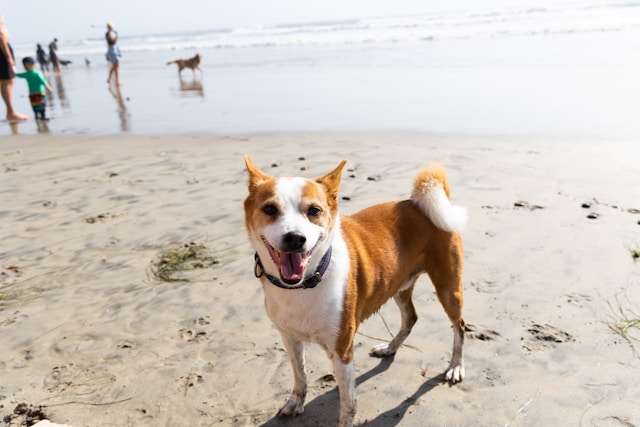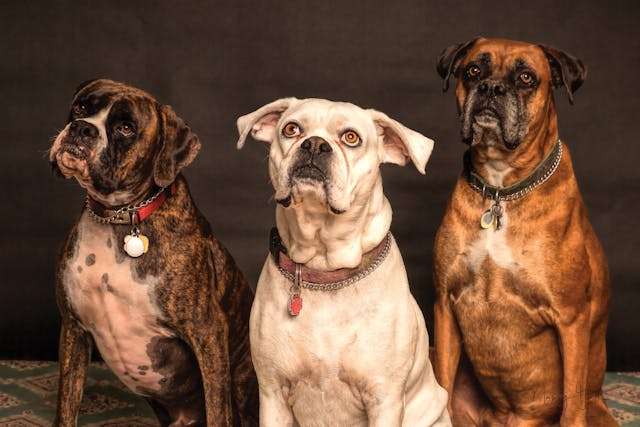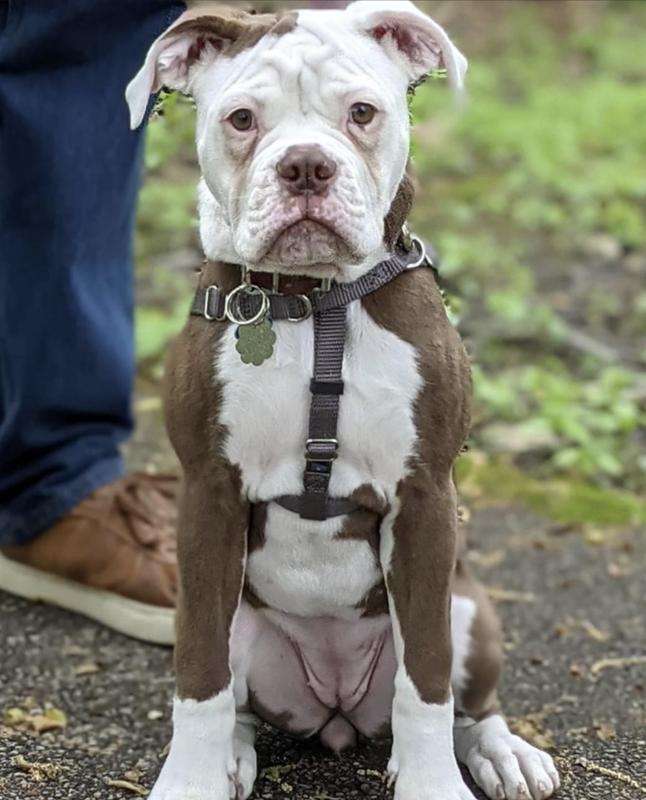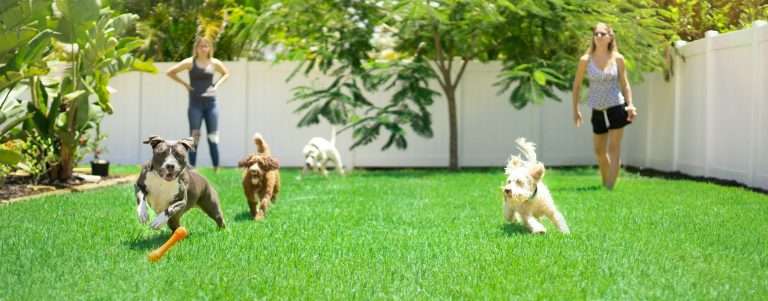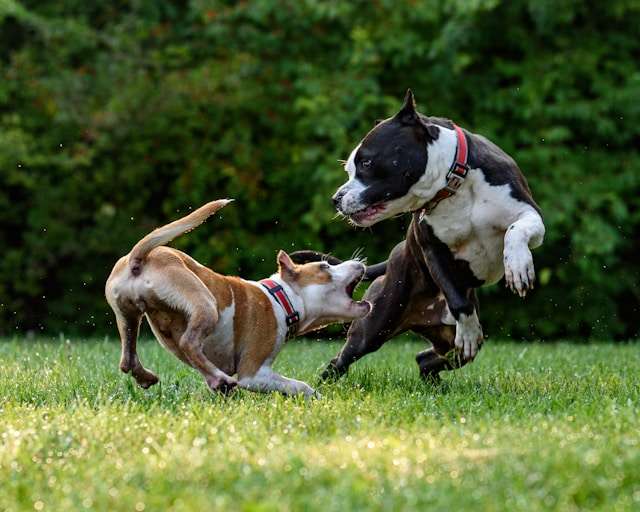Best High-Calorie Foods for Underweight Dogs: Everything Owners Should Know

Best High-Calorie Foods for Underweight Dogs. Keeping your dog at a healthy weight is critical for their well-being, but underweight dogs often need extra care and attention. Providing nutrient-dense, high-calorie foods can help your pet regain strength and energy.
In this post, you’ll discover simple yet practical food options to support your dog’s caloric needs. If you’re curious about the importance of calories, explore Understanding the Role of Calories in Your Dog’s Diet. Ensuring your dog gets the proper nutrition starts with the right choices.
Table of Contents
Understanding Underweight Dogs
Before diving into resolving weight issues, it’s essential to understand why dogs become underweight and how to recognize the problem. Knowing when your dog might need extra care ensures you can take swift action.
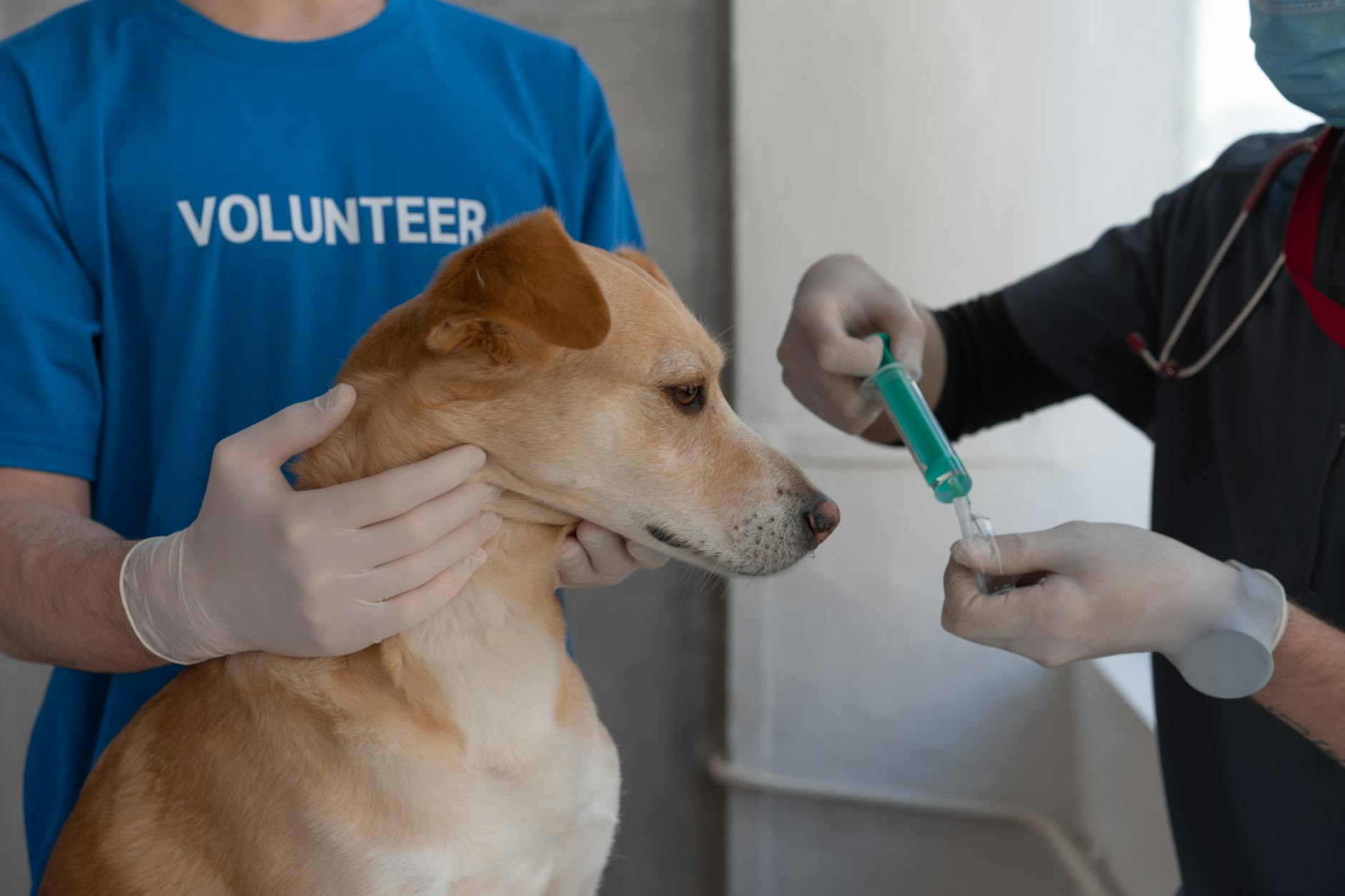
Photo by Mikhail Nilov
Common Causes of Underweight in Dogs
Dogs can lose weight for many reasons, but health problems, poor nutrition, or an overly active lifestyle are some of the most common culprits. Let’s break these down:
Health Issues: Some medical problems can cause weight loss, such as gastrointestinal disorders, metabolic issues, or dental pain that makes eating difficult. Chronic conditions like diabetes or cancer may also play a role. If your dog has unexpected weight loss, consult your vet without delay. Take a look at this AKC article to know more about these situations.
- Poor Diet: Like humans, dogs need balanced nutrition for energy and muscle maintenance. Feeding your dog low-quality or nutritionally incomplete food can result in weight loss over time. Consider this guide on How to Create a Dog Feeding Schedule for a healthier routine.
.
Excessive Activity: Some breeds are naturally more active, burning calories faster than they consume. Dogs involved in strenuous activities or raised as working animals may struggle to maintain enough weight unless provided with calorie-dense meals.
Each situation is unique, so it’s essential to understand your dog’s lifestyle and health history. This will help identify what might be behind their weight issues.
Signs Your Dog is Underweight
It’s not always obvious when a dog is underweight. However, there are some clear physical and behavioral signs to watch for:
Visible Ribs, Spine, or Hip Bones: If you can see these clearly, your dog likely lacks sufficient body fat. Stand next to your dog and take a good look at their torso. Do they look bony or emaciated? According to Hill’s Pet, this is one of the leading indicators.
Low Energy Levels: Underweight dogs often lack the energy for daily activities. They may seem lethargic or disinterested in playtime.
Dull Coat Quality or Hair Loss: Poor nutrition that causes weight loss often leads to a boring or patchy coat.
Shallow Abdomen: In a healthy dog, the abdomen should tuck upward slightly when viewed from the side. If it appears sunken or hollow, it could indicate an underweight condition.
Behavioral Changes: Some underweight dogs develop anxiety or even food-guarding tendencies as they attempt to compensate for their needs.
Checking for these signs can help you quickly decide if intervention is necessary. Adding high-calorie food may be enough in some cases, but in extreme cases, always consult your veterinarian to rule out more significant health issues. Read more about identifying underweight conditions at Maryland Veterinary Surgical Services.
The Importance of High-Calorie Foods
When it comes to helping underweight dogs regain their health, providing the right amount of calories from nutritious foods is key. Calorie-dense diets are not just about adding weight; they are crucial in improving overall vitality and well-being.
Nutritional Needs of Underweight Dogs
Underweight dogs require more than just extra calories. They need nutrient-dense foods that support muscle growth, organ function, and energy restoration. Just as humans won’t thrive on empty calories, dogs also need a balance of macronutrients and vitamins to maintain a healthy weight.
Here’s what every owner should focus on:
Protein-Packed Meals: Protein helps build and repair muscles. Look for high-quality protein sources like chicken, fish, or lamb. A comprehensive guide to meeting your dog’s energy needs can be found here.
Healthy Fats: Fats provide concentrated energy in small amounts. Omega-3s and animal fats are excellent choices.
- Carbohydrates: While not always essential, digestible carbs like sweet potatoes and grains can quickly boost energy.
Beyond macronutrients, vitamins like B-complex, minerals like zinc, and amino acids like taurine are vital for underweight dogs. Without these, even the best high-calorie foods fall short of sustaining your pet’s recovery.
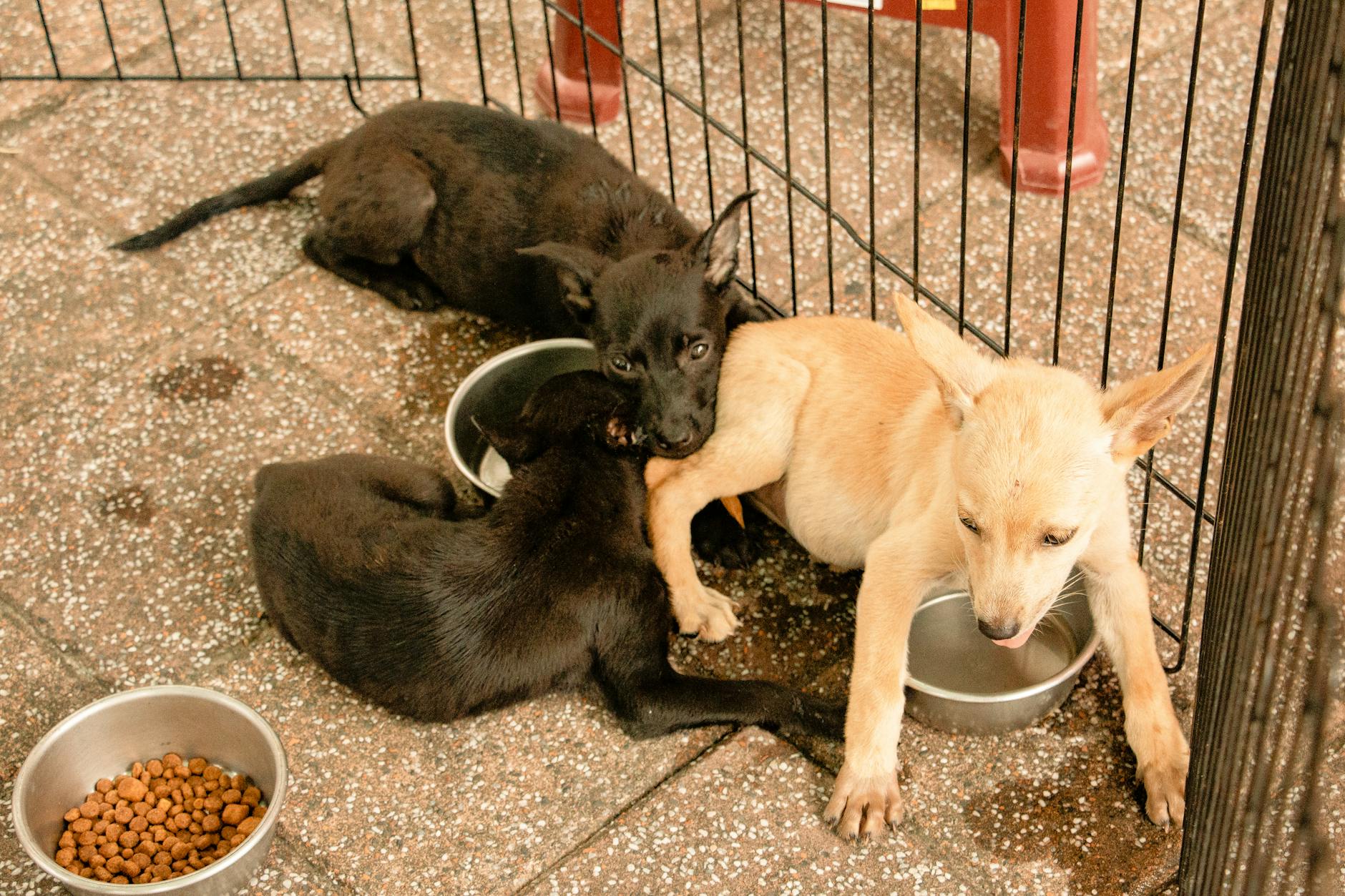
Photo by Wendy Wei
Benefits of High-Calorie Diets
High-calorie diets go beyond adding pounds—they’re about restoring vitality. A calorie-rich diet serves as a lifeline if your dog has been underweight due to illness, stress, or activity level.
Increased Energy Levels: With more calories comes more energy. Whether playing fetch or guarding the yard, your dog will enjoy a revived zest for life.
Faster Recovery: Underweight dogs recover faster on calorie-dense meals after illness or surgery. Nutrients work to repair damaged tissues and restore strength.
Improved Coat and Skin Health: With adequate fat and proteins, high-calorie foods can turn a dull coat glossy and reduce skin issues.
Better Overall Health: High-calorie diets contribute to organ function, immune support, and mental sharpness. A balanced diet is a foundation for longevity and happiness in your furry companion.
- Check out this resource for more information on specialized diets designed to help dogs gain weight naturally.
Giving your dog high-calorie, nutrient-packed meals might feel like a small change, but the results can be life-changing. Plus, your dog deserves it! Please make the most of calorie-dense food options curated to meet their individual needs. Additional details on diets optimized for weight gain can be found here.
Top High-Calorie Foods for Underweight Dogs
Underweight dogs often require a carefully tuned diet to regain their health and energy. Adding high-calorie options to their meals can make a world of difference. Whether you prefer ready-made formulas, homemade alternatives, or calorie-rich treats, there are plenty of ways to help your furry friend achieve a healthier weight.
Commercial High-Calorie Dog Foods
Choosing commercial dog food designed for weight gain ensures your dog gets the necessary nutrients without the guesswork. These foods are specially formulated with higher calorie counts, optimal protein, and fat levels. Here are a few great options:
- Puppy formulas: High in protein and calories, these cater to dogs needing extra energy for growth or recovery. Learn more from our guide on the Best Dry Dog Food.
- Calorie-dense wet food: Brands often market wet foods with added fats and proteins for underweight dogs. Check out recommendations from The 10 Best Dog Foods for Weight Gain.
Consider consulting your vet before switching to a weight-gain formula to ensure the product meets your dog’s needs.

Photo by MART PRODUCTION
Homemade High-Calorie Dog Food Recipes
Homemade meals allow you to control every ingredient and ensure optimal calorie density. Preparing such meals doesn’t need to be complicated. Here are two quick and effective recipes:
Beef and Sweet Potato Stew:
- Ground beef: High in protein and calories.
- Boiled sweet potatoes: A healthy carb for sustained energy.
- Coconut oil: Adds beneficial fats.
Chicken and Rice with Peanut Butter:
- Shredded chicken: Lean and calorie-packed.
- Brown rice: Provides complex carbs.
- A spoonful of peanut butter: High in fats and irresistibly tasty.
Homemade diets should be supplemented with vitamins to ensure balanced nutrition. Check out Homemade Food for Dogs to Gain Weight the Healthy Way for more ideas.
Healthy Treats to Boost Caloric Intake
Treats are a fun and easy way to add extra calories between meals. Be sure to select healthy, nutrient-packed options. Here are some excellent high-calorie treats:
- Dried Meat Treats: Look for high-protein options like dried chicken, beef, or salmon. These are great for energy and muscle repair.
- Cheese Cubes: Packed with calories and fats, they make a tasty, occasional snack.
- Peanut Butter Bites: Many dogs love peanut butter, which is not just calorie-rich but also full of healthy fats.
Adding a treat or two to your dog’s meal plan can make a noticeable difference. For more suggestions, visit How to Fatten Up a Dog.
By integrating high-calorie foods into your dog’s diet, you can help them gain weight safely and effectively.
Feeding Strategies for Underweight Dogs
Helping an underweight dog regain optimal weight takes patience, attention, and a well-planned feeding strategy. Incorporating high-calorie foods is just one part of the solution. Establishing a consistent routine, introducing changes gradually, and monitoring progress will make a difference. Here’s how you can implement effective feeding strategies for your furry friend.
Creating a Feeding Schedule
A routine feeding schedule ensures your dog gets the calories they need throughout the day without overwhelming their system. Consider offering smaller, more frequent meals instead of one or two large meals. Why? Smaller meals are easier to digest and help stabilize your dog’s energy levels.
Steps to set a proper feeding schedule:
- Divide Food into 3-4 Portions: Break meals into smaller servings spaced evenly across the day.
- Establish Consistent Times: Feed your dog around the exact times daily to help regulate their metabolism.
- Use Mealtime as a Training Opportunity: Reinforcing good habits with treats or commands during feeding can foster trust and bonding.
Check out How to Create a Dog Feeding Schedule for more ideas about setting up feeding times. Keeping your dog’s meals predictable helps them acclimate and ensures they consume enough nutrients consistently.
Incorporating High-Calorie Foods Gradually
Adding calorie-dense foods brings its own challenges. Jumping right into a new diet can upset your dog’s stomach, leading to digestive issues like diarrhea. Gradual introduction is key to avoid these complications while allowing their system to adapt comfortably.
Here’s how to go about it:
- Start Slow: Add a small amount of the new food (10-15%) into their diet.
- Increase Gradually: Over 7-10 days, slowly increase the proportion until the new food makes up the bulk of their meals.
- Observe for Reactions: Check for any signs of discomfort like bloating, lethargy, or changes in stool consistency.
Choose low-fat meats, peanut butter (in moderation), and specially formulated dog food for weight gain. Check out What’s the Best Dog Food for Weight Gain? for reliable product recommendations.
Monitoring Weight and Adjustments
Once a feeding strategy is in place, closely monitoring your dog’s progress is crucial. Regular weight checks will help you determine if the new routine is adequate or if adjustments are needed.
Steps for tracking and adapting:
- Weigh Weekly: Use a home scale or visit your vet to track weight changes.
- Keep Notes: Maintain a log of what you’re feeding and your dog’s response to different foods.
- Consult Your Vet: If progress stalls or your dog gains weight too quickly, consult your vet to modify the diet plan.
Adjust the portions or food type based on your observations. If needed, combine different feeding strategies for the best outcome. Learn additional tips on Helping Your Dog Gain Weight for practical guidance.
Taking these proactive steps ensures your dog’s transition to a healthier weight is smooth and sustainable. Effective feeding strategies and regular monitoring can restore your dog’s strength and vitality.
When to Consult a Veterinarian
Helping your dog gain weight isn’t always straightforward. Underlying health issues might sometimes need professional attention to address the root cause. Knowing when to contact your veterinarian ensures your pet gets the help before problems escalate.
Signs That Require Veterinary Attention
Recognizing the signs that your dog needs immediate medical care can make all the difference in their recovery. While occasional changes in appetite or energy can be expected, persistent symptoms should never be ignored. Here are key concerns to watch for:
Sudden Weight Loss: If your dog is losing weight rapidly without changing their diet or activity, contact your vet immediately. Rapid weight loss could be a sign of a serious underlying condition, such as metabolic disorders or organ dysfunction. Guidance on identifying concerning symptoms is available on PetMD’s list of 10 critical signs.
- Vomiting or Diarrhea: Occasional upset stomachs can happen, but frequent vomiting or diarrhea, especially if accompanied by blood, signals a more serious issue. Learn
when to act on digestive symptoms from AKC’s advice on calling your vet.
- Lethargy or Weakness: If your dog seems unusually tired, disinterested in activities, or struggles to move, don’t wait. These signs could indicate
nutritional deficiencies, infections, or other health concerns.
Changes in Eating or Drinking Habits: Noticeable shifts, like refusing food or drinking excessively, are common indicators that something’s wrong. A dry nose, sunken eyes, or pale gums paired with these changes can indicate dehydration or systemic illness.
- Unusual Physical Symptoms: Swelling, lumps, or wounds that don’t heal also call
for veterinary attention. Even subtle changes in your dog’s coat or skin, like hair loss or rashes, should be checked.
If you’re in doubt, always err on the side of caution by reaching out to your veterinarian. Acting early can often save your pet unnecessary discomfort or a worsening condition.
Collaborating with Your Vet on Nutrition
Your veterinarian is your best partner when tailoring a diet plan to support your dog’s recovery. While high-calorie foods are part of the solution, a balanced approach ensures your pet regains weight healthily without compromising other aspects of their well-being.
Nutritional Assessments: Vets can perform diagnostic tests to identify
deficiencies or health issues contributing to weight loss. They’ll recommend foods, supplements, or medications tailored to your dog’s needs. Considering homemade diets? Consulta vet first, as suggested in this article on dog-friendly food plans.
Portion and Calorie Planning: Your vet will guide you in determining the right amount of calories your dog needs to maintain a steady weight gain. It’s not just about adding food; it’s about choosing the right kind.
Specialized Diet Plans: For dogs with specific conditions like kidney issues, food allergies, or diabetes, creating a customized diet is critical. Discover protein alternatives and how veterinary input is essential in this guide to protein alternatives for dogs with sensitivities.
Frequent Check-Ups: Weight gain should be monitored to prevent overfeeding or developing new issues. Regular weigh-ins and consultations allow your vet to tweak the plan based on results and your dog’s response.
Collaborating with a professional ensures you have a tailored plan that addresses weight concerns and promotes overall health. Persistent weight issues often require a layered solution—don’t hesitate to rely on expert guidance.
Frequently Asked Questions About High-Calorie Foods for Underweight Dogs
Wondering where to start when it comes to feeding an underweight dog? There are tons of questions that dog owners have when tackling weight gain in their furry friends. Below, we’ve gathered some of the most common FAQs to clarify things and help you take confident steps to improve your dog’s health.
What Are the Best High-Calorie Foods for Underweight Dogs?
Selecting high-calorie, nutrient-packed foods is crucial for dogs needing extra weight. Look for options rich in:
- Protein: Great choices include chicken, beef, fish, or lamb.
- Healthy Fats: Include salmon oil, peanut butter, or animal fats.
- Complex Carbs: Sweet potatoes, oats, and brown rice can provide sustained energy.
Not sure where to start? Many commercial foods designed for weight gain include these key nutrients. This guide to poodles’ nutritional needs shares more on balanced diets that work across all breeds.
How Can I Tell If My Dog Is Gaining Healthy Weight?
Weight gain monitoring is essential. Here’s how you can check:
- Feel for Fat Coverage: Are ribs less visible or more straightforward to touch without being prominent?
- Weigh Your Dog Weekly: Record incremental increases and adjust food as needed.
- Energy Boosts: Dogs with improved weight often regain their enthusiasm and stamina.
Keep a watchful eye to ensure your dog isn’t gaining weight too quickly, which can lead to other health concerns.
Can Puppies Eat High-Calorie Foods?
Yes, but with caution. Puppies naturally need more calories to fuel their growth, but overfeeding can lead to obesity. Stick with puppy-appropriate calorie-dense foods unless otherwise advised by your vet. Learn more in our dog breed guide, which talks about the specific needs of growing dogs.

Photo by Lisa Fotios
Are There Homemade Options for High-Calorie Dog Foods?
Definitely! Homemade recipes are a flexible way to control the ingredients and calorie content. A few ideas:
- Beef Stew: Ground beef, sweet potatoes, and coconut oil.
- Chicken & Rice: For added calories, lean chicken, brown rice, and a dollop of peanut butter.
Homemade diets should be supplemented with vitamins based on your vet’s advice. For ideas on meal options, explore this comprehensive guide.
What Are the Signs of Overfeeding?
Overfeeding can happen even when your goal is healthy weight gain. Signs to watch include:
- Sudden Weight Gain: Too much weight too fast often leads to joint problems.
- Digestive Issues: Bloating, diarrhea, or gas can indicate overfeeding or food intolerance.
- Lethargy: Excessive weight gain reduces your dog’s energy levels.
Keeping your portions balanced is the key. Please consult your vet regularly to ensure your dog’s diet suits their needs.
Adding enough calories correctly makes a simple yet powerful difference in your dog’s recovery. When in doubt, ask your veterinarian to guide you in providing the best care possible. Check out FAQs about dog health and care for even more helpful advice.
Conclusion
Helping your dog maintain a healthy weight is one of the best ways to support their happiness and longevity. Providing high-calorie, nutrient-dense foods helps underweight dogs gain weight and improves their vitality, coat quality, and energy levels. Every minor adjustment to their diet makes a meaningful difference.
Keep observing your dog’s progress and adjust their meals when needed. Always prioritize balanced nutrition to avoid overfeeding or causing digestive issues. Regular consultations with your vet will ensure your dog stays on track toward optimal health.
Ready to learn more about enhancing your dog’s nutrition? Check out Nutrition Tips for valuable insights into creating a diet that suits your pet’s unique needs.

